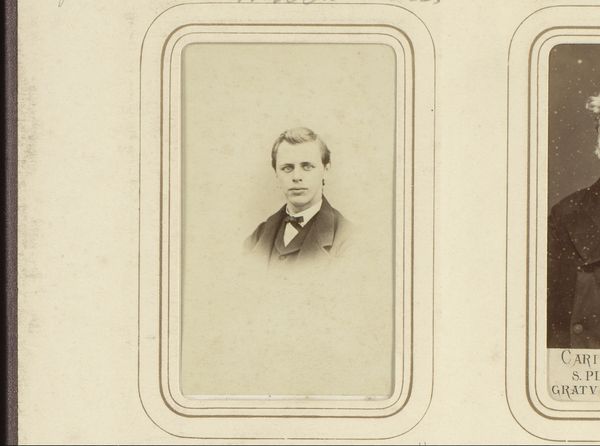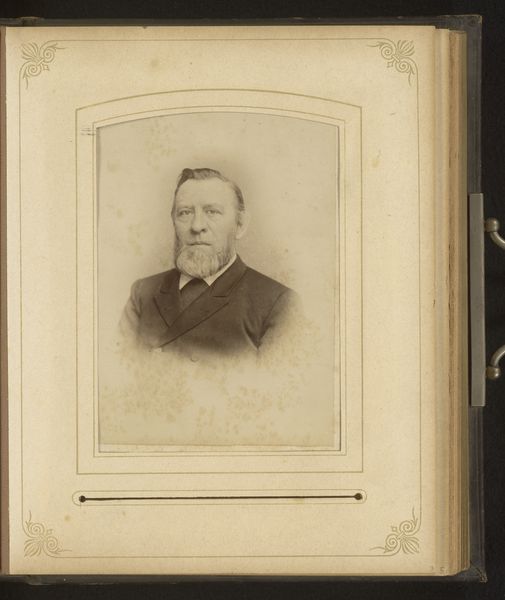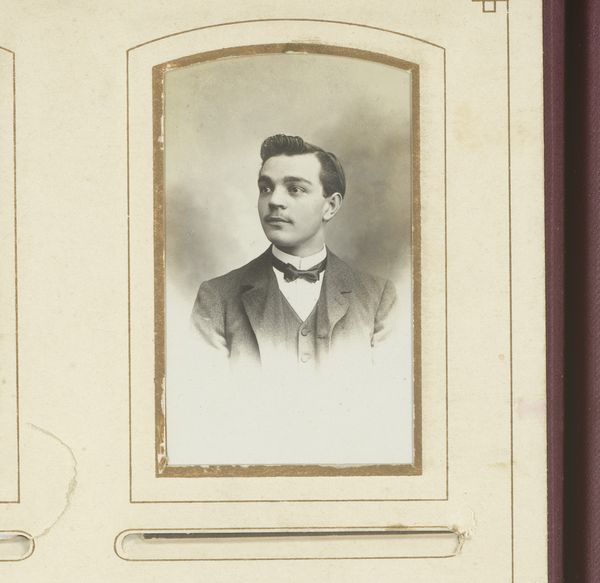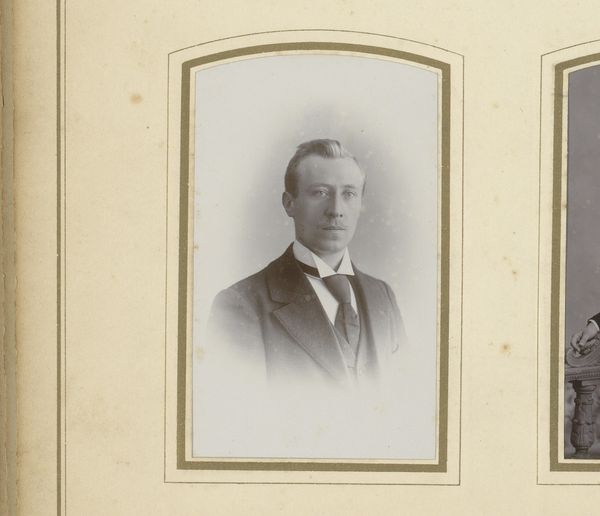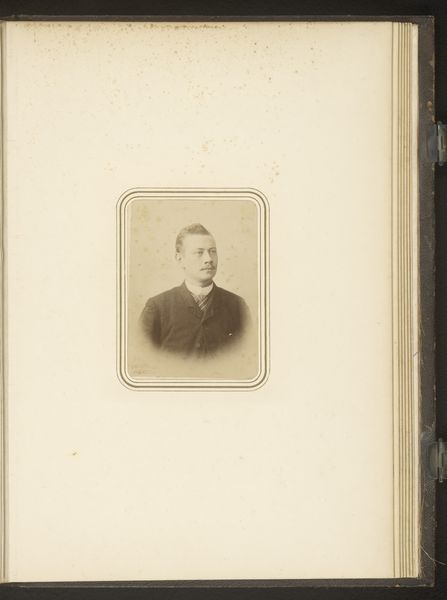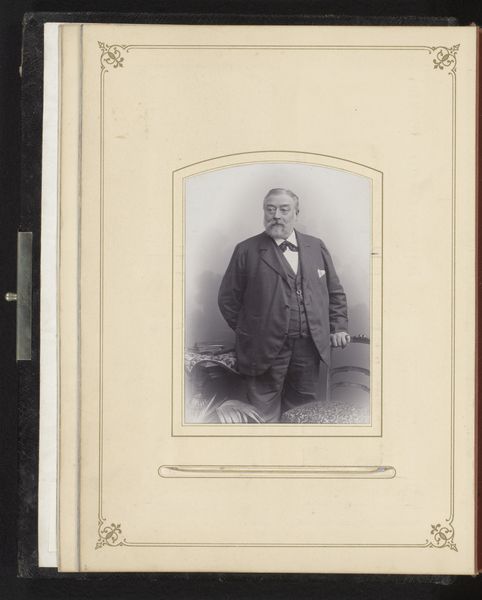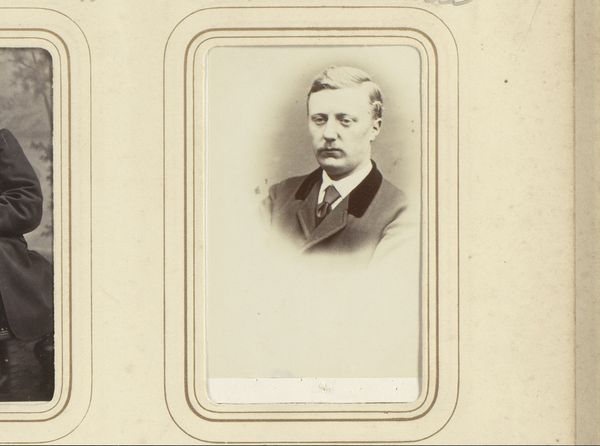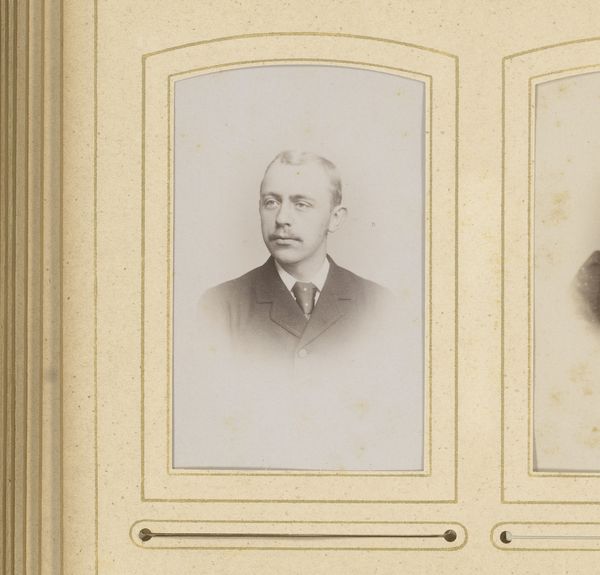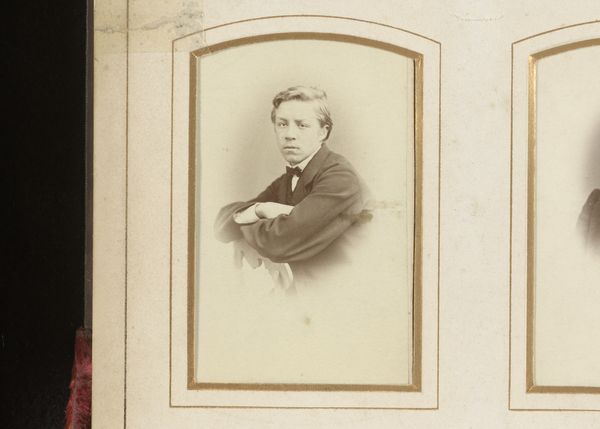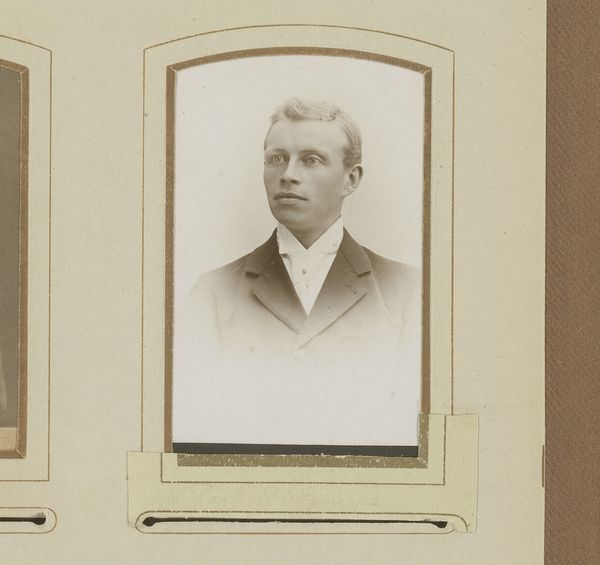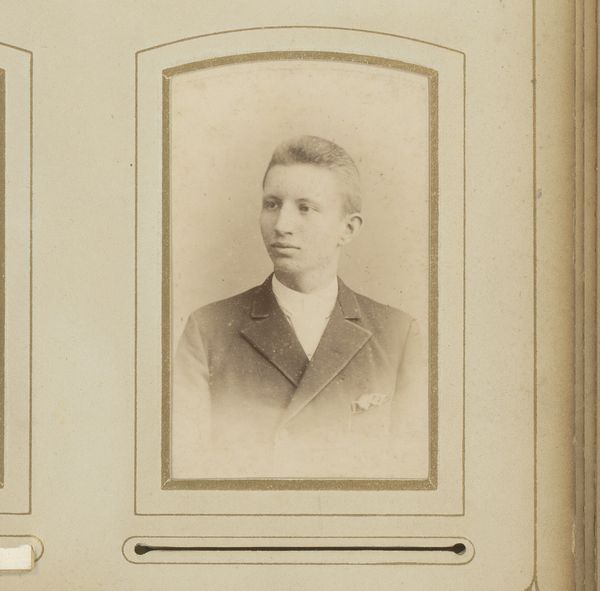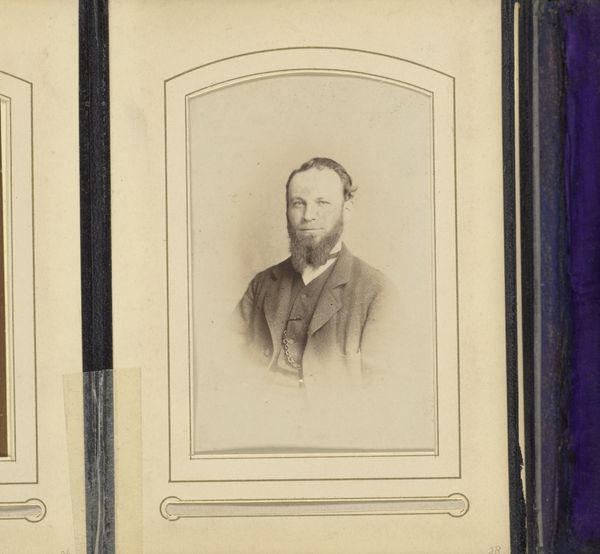
photography, gelatin-silver-print
#
photography
#
gelatin-silver-print
#
watercolor
Dimensions: height 139 mm, width 99 mm
Copyright: Rijks Museum: Open Domain
Curator: This gelatin silver print, known as "Portret van een man met snor en baard," is attributed to Gerrit Leenheer, and likely dates between 1895 and 1920. It's striking in its simplicity. Editor: It is. A somber stillness emanates from that neatly groomed mustache. It looks rather soft and almost collodion-like, and notice how that sepia tones create a dignified, if slightly faded, effect. Curator: Precisely. The sitter’s gaze is slightly averted, typical of photographic portraiture from the late 19th and early 20th centuries. This, in addition to his conventional suit, suggests a formality reflective of the period's social customs. The rising merchant or burgeoning professional wanting to solidify a legacy or assert a specific persona in a quickly changing world. Editor: I'm curious about the production process itself. Consider the laborious process of creating gelatin silver prints: coating paper, exposure, chemical development. The careful construction suggests an understanding of photography not merely as documentation, but as deliberate creation. And that paper has aged well too. Curator: Absolutely, the photographer carefully selected this medium and the developing process because of their capacity to record detailed and archival portraits that captured this rapidly expanding bourgeoise existence at the turn of the century. Photography democratized portraiture allowing even tradesmen to cultivate public identities. Editor: Yes, this form allowed so many sitters that the elite used to exclude based on portrait costs the means to self represent. There's power in controlling how you're seen. Plus, considering the printmaking methods available at that time it still maintains striking clarity and depth, even if faded now Curator: A fascinating snapshot of that time. The choice to record someone of the emerging professional or owner class helps show their influence and aspirations at this moment in history. Editor: It makes you consider how his descendants saw it when they looked at it… each stage has the memory imbued in the process itself, from development through aging it shows signs of that bygone age.
Comments
No comments
Be the first to comment and join the conversation on the ultimate creative platform.
